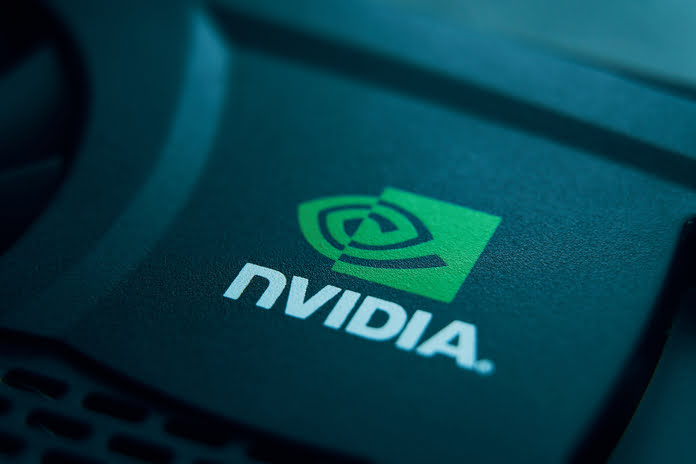Nvidia (NASDAQ:NVDA) is gearing up to reveal its second-quarter financial results next Wednesday, marking a pivotal moment in the ongoing AI hype cycle. In the midst of the AI frenzy, companies globally have turned to Nvidia’s graphics processing units to power innovative AI software and platforms, seeking to capitalize on the AI wave. A frenzy for Nvidia’s chips has led technology firms of all scales to scramble for supply.
During Tesla’s (NASDAQ:TSLA) Q2 earnings call, CEO Elon Musk conveyed the company’s intent to secure as many Nvidia graphics processors as possible. This robust demand largely contributed to Nvidia’s remarkable Q2 guidance, surpassing Wall Street estimates. The company’s previous earnings call projected revenue around $7.2 billion, but Nvidia surprised with a projected $11 billion for the quarter—an impressive 64% year-on-year surge. Market analysts are now anticipating similar success in the upcoming report. Forecasts also predict earnings of $2.07 per share, reflecting an astonishing 306% growth compared to the previous year. With these towering expectations, Nvidia faces intense scrutiny as its earnings announcement approaches, a factor already driving an uptick in the stock price.
According to Forrester analyst Glenn O’Donnell, “Nvidia’s upcoming earnings release will serve as a litmus test for the entire AI hype. Given the soaring demand, I expect the results to be exceptional, allowing Nvidia to command even higher profit margins.” Yet, the high bar set by these expectations implies that any underperformance could potentially dampen the AI craze and ripple through AI-related trades involving companies like Microsoft, Google, Meta, and AMD.
Wall Street’s Firm Belief in Nvidia
As trading commenced in New York, Nvidia’s stock reached $445, reflecting a staggering year-to-date surge of 204%. Analysts continue to upgrade their assessment of the company’s prospects.
In a recent research note, Wells Fargo’s Aaron Rakers elevated the price target for Nvidia from $450 to $500. Similarly, Tristan Gerra from Baird raised his price target to $570, emphasizing the surging demand for AI at various levels. Morgan Stanley’s Joseph Moore echoed this optimism, stating that “NVIDIA remains our Top Pick” due to the widespread shift towards AI and a persistent supply-demand gap that will endure for several quarters. UBS’s Timothy Arcuri also joined the chorus of positive projections, emphasizing that Nvidia plays a pivotal role in the surge of capital directed towards new AI software and specialized cloud infrastructure models.
Nvidia: A Dominant Force in AI Hardware and Software
Nvidia stands as a dominant force in manufacturing the high-powered graphics chips essential for AI program execution, coupled with the software required for AI platform development. The company’s preparations for this era span years, well ahead of Wall Street’s foray into the AI realm with the introduction of OpenAI’s ChatGPT generative AI platform in late 2022. Since then, Microsoft (NASDAQ:MSFT), Google’s parent company Alphabet (NASDAQ:GOOG, GOOGL), Meta (NASDAQ:META), Amazon (NASDAQ:AMZN), Intel (NASDAQ:INTC), AMD (NASDAQ:AMD), and a cohort of AI-related firms have established themselves as AI powerhouses. Nvidia’s
Strengths and Vulnerabilities
While Nvidia spearheads the AI movement, it faces a pressing challenge—meeting the soaring demand for its chips. Taiwan Semiconductor Manufacturing Company (TSM), Nvidia’s chip manufacturer of choice, is grappling with capacity constraints due to the relentless influx of Nvidia orders. This heightened demand has stretched the lead times for Nvidia’s critical H100 chips to a range of six to nine months, as stated in Arcuri’s note. Musk’s remarks during Tesla’s earnings call highlighted the overwhelming number of customers vying for Nvidia products. Despite prioritizing Tesla’s orders, Nvidia is unable to match the automaker’s chip requirements, leading Tesla to develop its own supercomputer powered by proprietary AI chips.
Beyond grappling with prolonged lead times for AI products, Nvidia is also navigating the competitive landscape against rivals Intel and AMD. While Nvidia enjoys a lead due to its early investments in AI, the semiconductor sector’s cutthroat nature means no lead is impervious, as Intel’s experience has shown. Glenn O’Donnell aptly summarizes the situation: “Nvidia is formidable, but not immune to competition. Rivals like AMD and Intel could make inroads.
However, Nvidia’s current momentum makes it a tough contender to challenge. Not invincible, but formidable.” The spotlight now turns to Nvidia’s earnings report on August 23, offering insight into the company’s performance during this crucial juncture.
Featured Image: Megapixl









